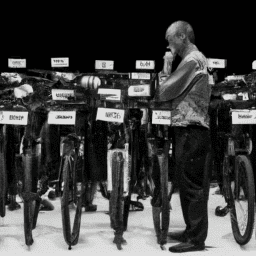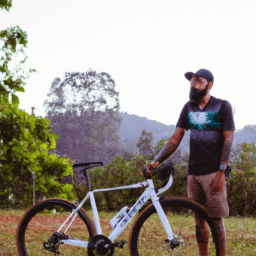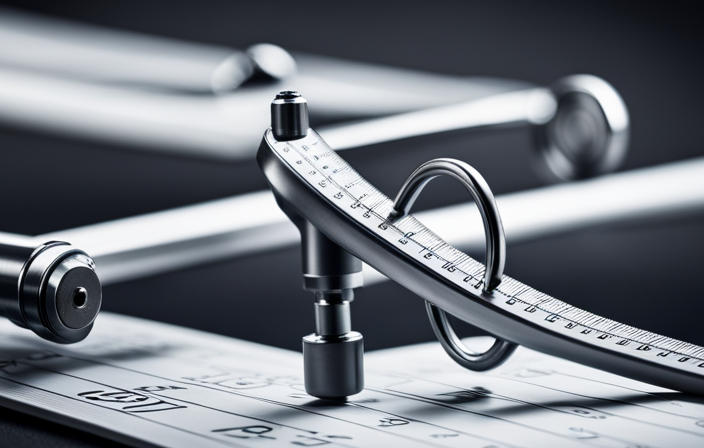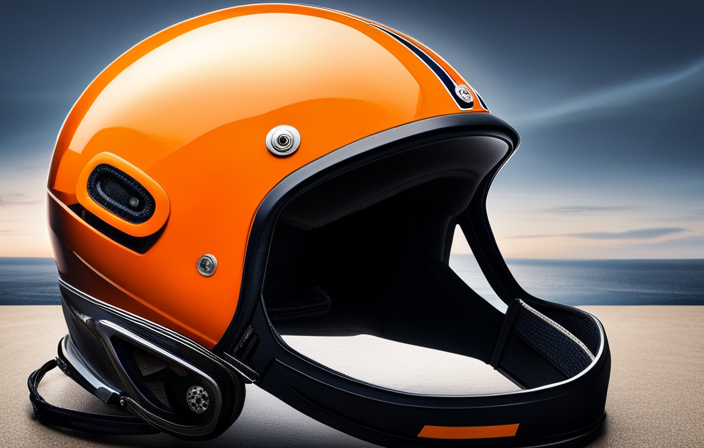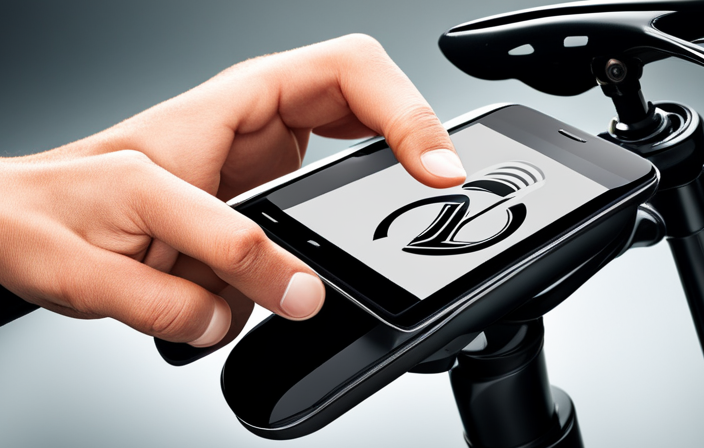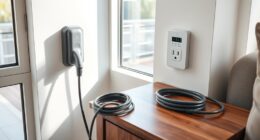Riding my reliable bike down the road, feeling the breeze sweep across my face, I find myself contemplating the financial aspect of this cherished way to get around. Bikes are available in a variety of forms, dimensions, and price points, ranging from cost-effective choices to premium versions that might run into the thousands. However, what is the true cost of a bicycle?
As a cycling enthusiast myself, I’ve done my fair share of research and can provide some insight into the factors that affect bicycle prices.
Firstly, the cost of a bicycle depends on the type of bike you’re looking for. Entry-level bicycles are typically the most affordable, with prices ranging from a couple hundred to around a thousand dollars. Mid-range bicycles, which offer more features and higher-quality components, can cost anywhere from $1,000 to $3,000. Finally, high-end bicycles, often used by professional cyclists, can cost upwards of $10,000.
However, there are many factors that can affect the cost of a bike, including the brand, materials, and technology used. In this article, I’ll delve deeper into these factors and provide tips on finding the best bicycle for your budget.
Key Takeaways
- Bicycle prices vary greatly depending on factors such as brand, materials, technology, and location.
- Entry-level bicycles cost between $300 and $600, mid-range bicycles cost anywhere from $1,000 to $3,000, and high-end bicycles can cost upwards of $10,000.
- Types of bikes include road bikes, mountain bikes, hybrid bikes, and high-end bikes in a variety of styles.
- When buying a bike, research different brands and models, look for sales and discounts, and prioritize safety by riding within your skill level and wearing proper safety equipment.
The Factors that Affect Bicycle Prices
The cost of a bicycle can vary greatly based on factors such as the materials used, the brand, and the level of technology incorporated. The most common materials used in bicycle manufacturing are aluminum, carbon fiber, titanium, and steel. Each material has its own unique properties and price range. For instance, aluminum is a lightweight and affordable material that is commonly used in entry-level bicycles. Meanwhile, carbon fiber is a high-performance material that is expensive and often found in professional-level bicycles.
Geographical location is another factor that affects bicycle prices. Bicycles manufactured in developed countries tend to be more expensive than those produced in developing countries due to differences in labor costs and manufacturing regulations.
The brand of the bicycle also plays a major role in determining its price. High-end brands are typically more expensive than their lower-end counterparts due to the use of premium materials and advanced technology.
With these factors in mind, let’s now move on to explore the world of entry-level bicycles.
Entry-Level Bicycles
You can snag an entry-level bike for a reasonable price. These bikes are perfect for beginners who want to get into cycling without breaking the bank. Entry-level bikes typically cost between $300 and $600 and are designed for recreational riding and light commuting. They may not have the most advanced features, but they are sturdy, reliable, and a great way to get started with cycling.
When shopping for an entry-level bike, there are a few key features to look for. First, consider the type of riding you will be doing. If you plan to ride on paved roads and bike paths, a road bike or hybrid bike may be the best choice. If you want to explore dirt trails and off-road terrain, a mountain bike may be a better fit. Additionally, look for features such as comfortable saddles, easy-to-use gears, and responsive brakes.
As you gain more experience and confidence on your entry-level bike, you may find that you want to upgrade to a mid-range bicycle for more advanced features and performance. But for now, enjoy exploring the best beginner cycling routes and getting comfortable on your new ride.
Mid-Range Bicycles
I’ve been researching mid-range bicycles and I’ve found that they’re a great option for those looking to upgrade from an entry-level bike. Road bikes are perfect for those who love to ride on smooth surfaces and want a bike that’s lightweight and fast.
Mountain bikes are ideal for those who enjoy off-road adventures and need a bike that can handle rough terrain.
Hybrid bikes are a great option for those who want a versatile bike that can handle both road and off-road riding.
Road Bikes
Road bikes can cost anywhere from $300 to over $10,000, with the average price being around $2,000. When it comes to road biking, it’s not just about the cost of the bike itself, but also the maintenance and accessories required to keep it in top condition.
Road bikes require regular maintenance, including tuning the gears, adjusting the brakes, and replacing worn tires. It’s important to factor in the cost of maintenance when purchasing a road bike.
In addition to maintenance, cyclists also need to invest in appropriate apparel for road biking. This includes a helmet, padded shorts, cycling shoes, and a lightweight jersey. These items can add up, but they are necessary for comfort and safety while cycling.
As with any sport, it’s important to have the right gear to ensure a positive experience.
Now, let’s shift our focus to mountain bikes.
Mountain Bikes
Get ready to hit the trails with a mountain bike, which requires different gear and maintenance than road bikes. Mountain bikes are designed to handle off-road terrain, with features like wider tires, suspension systems, and more durable frames.
But before you head out on your first ride, there are a few things to keep in mind. First, consider investing in some bike accessories like a helmet, gloves, and a hydration pack. Mountain biking can be a physically demanding activity, and safety should always be a top priority. Additionally, make sure you’re prepared to handle the maintenance costs that come with owning a mountain bike. The rough terrain can take a toll on your bike, so it’s important to stay on top of regular tune-ups and repairs to keep your bike in good condition.
In addition to gear and maintenance costs, it’s also important to be aware of the potential risks associated with mountain biking. Accidents can happen, so it’s crucial to ride within your skill level and always wear proper safety equipment. With that being said, if you’re looking for an adrenaline-pumping adventure and a new way to explore nature, a mountain bike could be just what you need.
As we move on to the next section about hybrid bikes, it’s important to note that these bikes offer a combination of features from both road and mountain bikes. So, if you’re looking for a versatile bike that can handle a variety of terrain, be sure to check out the hybrid bike options.
Hybrid Bikes
Hybrid bikes offer a versatile option for riders who want to tackle both on and off-road terrain, like commuting to work or hitting the trails on the weekends. These bikes are designed to combine the best features of road and mountain bikes, making them perfect for riders who want the comfort of a road bike and the performance of a mountain bike.
Hybrid bikes come in a range of styles, from those designed for long commutes to those designed for recreational rides, and each style offers its own unique set of benefits.
When it comes to choosing a hybrid bike, riders will need to decide between comfort and performance. If you’re looking for a bike that is comfortable for long rides and easy to handle on uneven terrain, a more comfort-oriented hybrid bike might be the right choice for you. On the other hand, if you’re looking for a bike that is fast and agile, a performance-oriented hybrid bike might be the way to go. Ultimately, the choice between these two types of hybrid bikes will depend on your personal preferences and riding style.
Moving on to high-end bicycles, riders who are looking for the ultimate in performance and quality will want to consider investing in a high-end bike. These bikes are designed with the latest technology and the highest quality materials, and they are built to deliver the best possible performance in any riding conditions.
High-End Bicycles
If you’re looking for top-of-the-line performance, a high-end bike is worth the investment. These bikes are not only designed for speed, but also for comfort and durability. They are made with the highest quality materials and components, and often come with custom built options and luxury bicycle accessories.
High-end bikes come in a variety of styles, from road bikes to mountain bikes to commuter bikes. They are designed to meet the specific needs of the rider, whether it’s speed, agility, or comfort.
If you’re willing to spend the extra money, a high-end bike can provide an unparalleled riding experience. However, if you’re on a budget, there are still great options available.
In the next section, I’ll share some tips on finding the best bicycle for your budget.
Tips on Finding the Best Bicycle for Your Budget
When it comes to finding the best bicycle for your budget, there are a few key tips I’ve learned along the way.
First, I always make sure to research the different brands and models available so I can find the best fit for my needs.
Additionally, buying used can be a great way to save money without sacrificing quality.
Finally, I always look for sales and discounts before making a purchase, and I never buy a bike without first taking it for a test ride to ensure it’s a comfortable and safe fit.
Research Brands and Models
You’ll want to check out different brands and models to find the perfect bike for you. Some top brands to consider are Trek, Specialized, and Giant. These brands offer a wide range of models, from entry-level bikes to high-end racing bikes.
When researching different models, consider factors such as the type of riding you’ll be doing, the terrain you’ll be riding on, and your budget. Some popular models to consider are the Trek Domane, Specialized Roubaix, and Giant Defy. These models are great for long-distance rides and offer features such as lightweight frames, comfortable seats, and smooth shifting.
When researching brands and models, be sure to read reviews from other cyclists to get an idea of the bike’s performance, durability, and overall value. If you’re on a tight budget, consider buying used to get a quality bike at a lower price point.
Consider Buying Used
Opting for a used bike can be a great way to save some cash while still getting a ride that’s as good as new, and you won’t believe the amazing deals you can find! Here are a few tips to keep in mind when considering a used bike:
- Research the bike’s history: It’s important to know if the bike has been in any accidents or if it has had any major repairs. This information can help you negotiate the price and make an informed decision.
- Negotiate the price: When buying a used bike, there’s always room for negotiation. Don’t be afraid to ask for a lower price, especially if you notice any issues with the bike.
- Check online marketplaces: Websites like Craigslist and Facebook Marketplace can be great sources for used bikes. Just be sure to meet the seller in a public place and inspect the bike thoroughly before making a purchase.
- Test ride the bike: Before buying the bike, take it for a test ride to make sure it’s comfortable and fits your needs.
- Consider the cost of upgrades: If the bike needs any upgrades or repairs, factor those costs into the overall price.
When looking for a bicycle, it’s always a good idea to consider buying used. Not only can you save money, but with a bit of research and negotiation, you can find a bike that meets your needs and budget.
Now, let’s move on to the next step and explore how to look for sales and discounts.
Look for Sales and Discounts
Don’t miss out on amazing deals for your dream bike by keeping an eye out for sales and discounts! Bicycles can be expensive, but with the right discount strategies and negotiation techniques, you can purchase a high-quality bike at an affordable price.
One popular way to find discounts is to check online retailers or local bike shops for seasonal sales or clearance events. These sales can offer significant savings on new bikes, which can make them more accessible for budget-conscious buyers. Another great option is to look for refurbished or demo bikes, which have been used for test rides or returned after minimal use. These bikes may come with a lower price tag, but they are still in great condition and can provide a fantastic value for the money.
| Discount Strategies | Negotiation Techniques |
|---|---|
| Look for seasonal sales or clearance events | Be willing to walk away |
| Shop at local bike shops for deals | Bundle accessories for a better price |
| Consider refurbished or demo bikes | Research and compare prices with other retailers |
| Join loyalty programs for exclusive discounts | Ask for last year’s model at a discount |
| Check online retailers for deals | Look for package deals or promotions |
When it comes to purchasing a bike, it’s essential to find a bike that is comfortable and suits your needs. One way to ensure this is to test ride the bike before buying. This can help you get a feel for the bike’s handling, comfort, and fit. So, let’s dive into the next section and learn more about the importance of test riding before making a purchase.
Test Ride Before Buying
Before making any purchase, it’s crucial to take the bike for a test ride to experience the thrill of riding and find the perfect fit for your body shape and size.
Test riding a bike offers numerous benefits that can help you make an informed decision and ensure that you choose the right bike that fits your needs and preferences. One of the key benefits of test riding a bike is that it allows you to feel the bike’s ride quality and handling.
You can get an idea of how it feels to ride the bike and how it responds to different terrains and conditions. Moreover, test riding also enables you to check the bike’s comfort level and maneuverability, which is essential for long rides.
Additionally, it’s important to note that the proper fit of the bike is crucial for your safety and overall riding experience. Test riding a bike helps you determine the right frame size, saddle height, and handlebar position, ensuring that you have a comfortable and safe ride.
Frequently Asked Questions
Are there any additional costs associated with owning a bicycle?
As a bike owner, I’ve found that regular maintenance tips are crucial to keep my bike in good condition. Additionally, accessories like lights, locks, and helmets can add to the overall cost of owning a bike.
What materials are used to make bicycles and how do they affect the price?
What materials are used to make bicycles and how do they affect the price? Metal vs Carbon: Which is more cost effective? Brand names play a significant role in pricing bikes made from the same materials. However, carbon is generally more expensive due to its lighter weight and increased stiffness.
How often should I get my bicycle serviced and how much does it cost?
As a bike owner, it’s important to keep up with regular servicing to prolong the life of your bike. Frequency of servicing depends on usage and DIY maintenance is also crucial. Costs vary depending on the type of service needed.
Can I negotiate the price of a bicycle with a retailer?
I’ve found that bargaining strategies can be effective when buying a bicycle from a retailer. Look for incentives like free accessories or service packages to sweeten the deal. It’s always worth trying to negotiate!
Are there any financing options available for purchasing a bicycle?
I’ve explored various Bicycle financing options and found that many retailers offer financing plans with varying credit score requirements. However, it’s important to evaluate the terms and interest rates before committing to a plan.
Conclusion
So, that’s how much a bicycle costs! It really depends on the type, the brand, and the features you’re looking for.
You can get a decent entry-level bicycle for around $200, or splurge on a high-end one for over $10,000. But don’t let the price tag discourage you from getting into cycling.
With a little research and some savvy shopping, you can find a bicycle that fits your budget and your needs. Whether you’re a casual rider or a serious athlete, there’s a bike out there for you.
Remember, a bicycle is an investment in your health and happiness. So don’t be afraid to spend a little extra for a quality ride that will last you for years to come.
Happy cycling!
